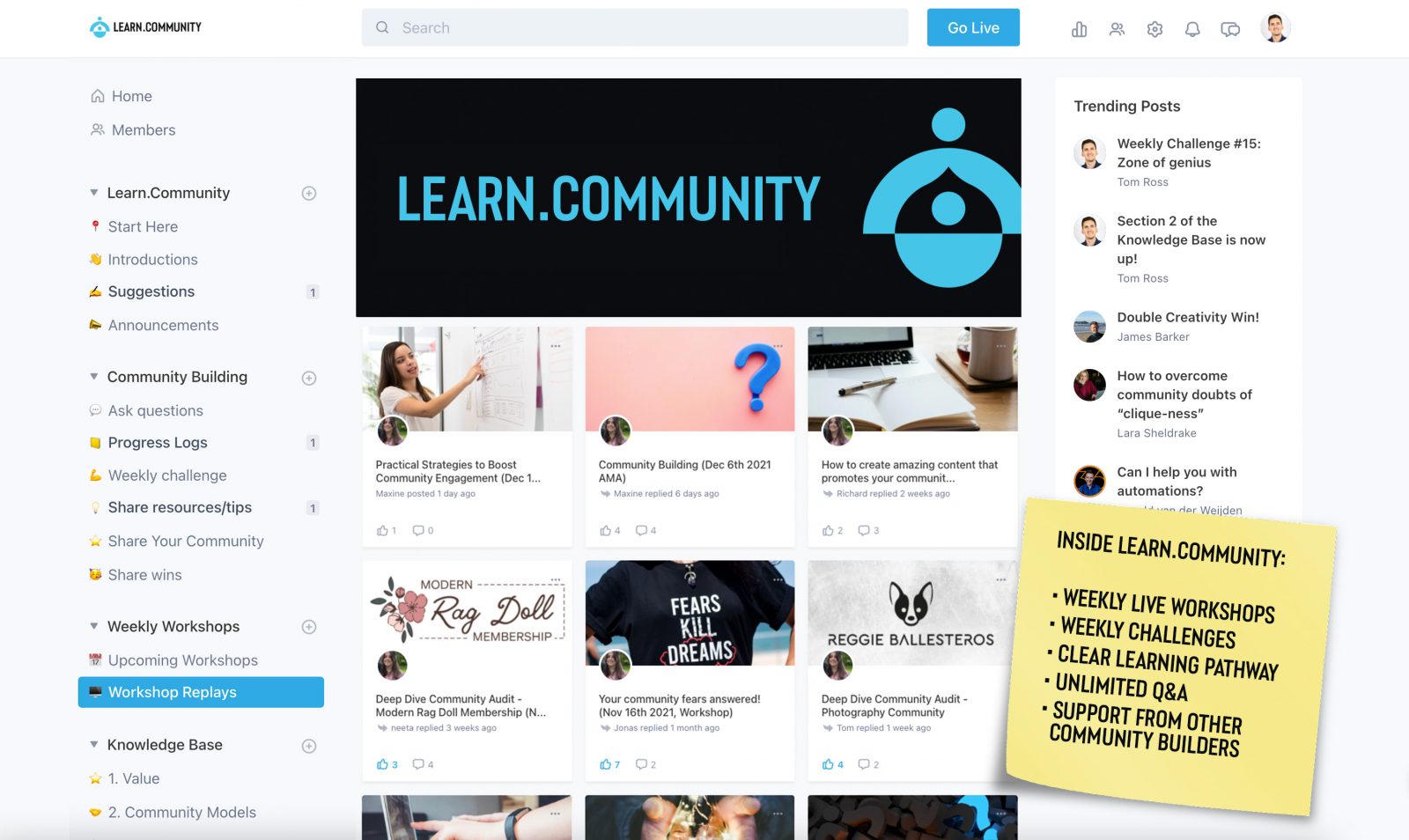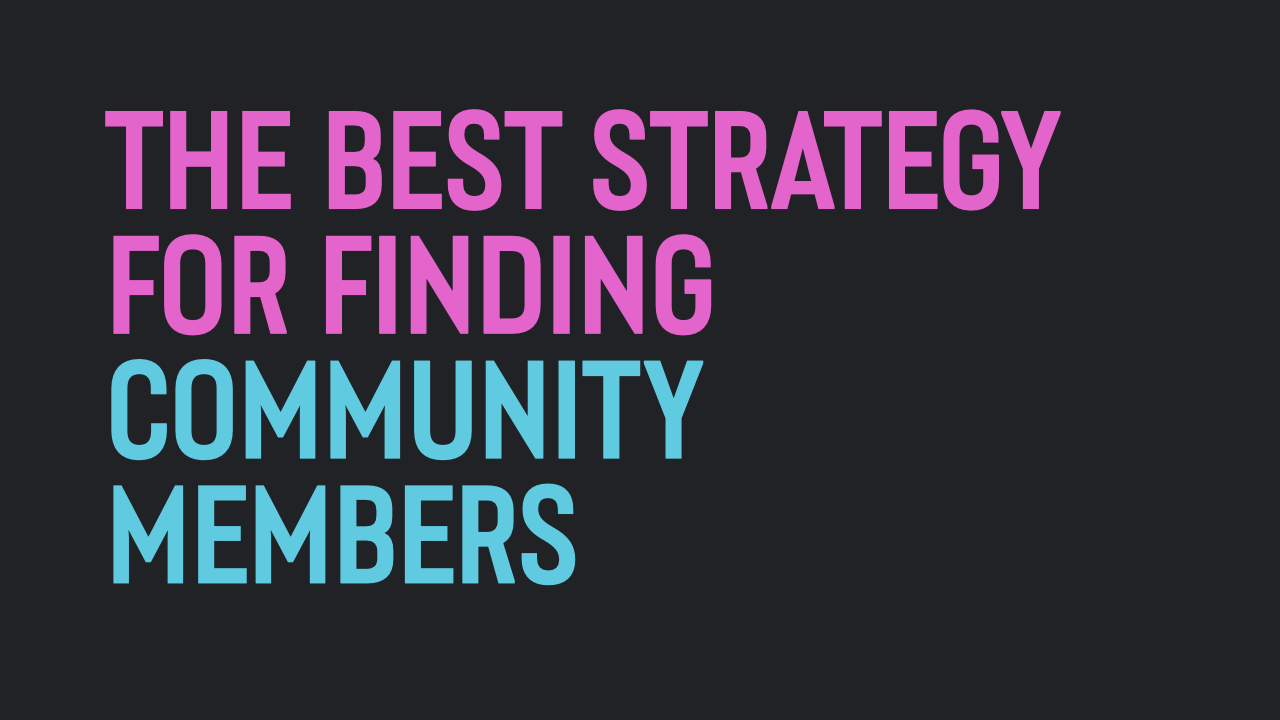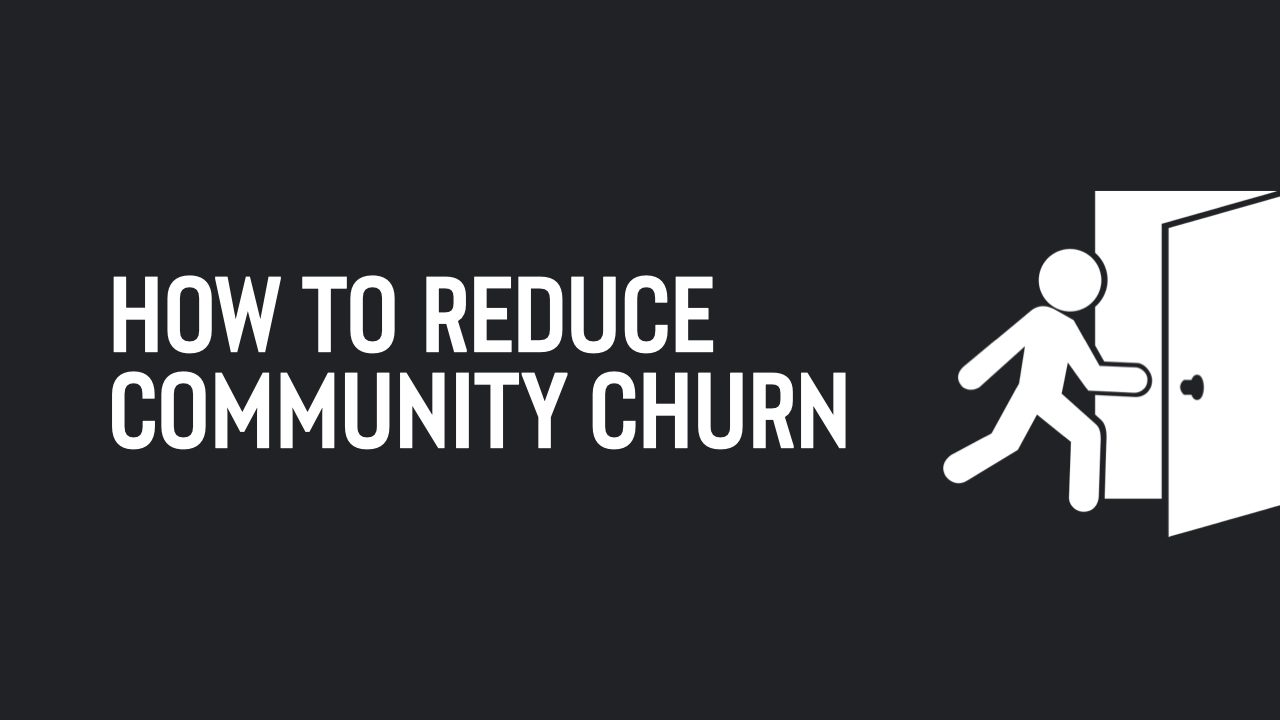
I’m excited to share the one of the best strategies I’ve found for finding community members.
Finding community members via existing communities
Earlier in my career I joined a paid community for entrepreneurs called Fizzle. At this time I was a blogger and freelance web designer.
Whenever I join a community, I like to bring as much value as I can. At Fizzle, I began to offer free design feedback to help other members. I also started a new thread ‘Share your landing page and I’ll offer you a free critique’. That thread went on to become their all time most popular. I critiqued literally hundreds of landing pages, providing my fellow members with tons of value. I was even awarded the title ‘Fizzle whizz’, to recognise my services within the community.
What happened next surprised me. My private messages started to fill up. Members were thanking me for the thread. Some asked if they could hire me to design their website, as they trusted in my abilities. Soon I was regarded as the authority on design within that community. My freelance career took an upswing – I was landing more clients and commanding higher rates. The best part? I didn’t need to sell anything, the clients were coming to me!
This seemed to be a perfect scenario. The Fizzle community was getting value from my design expertise, and I was getting high quality new clients. Win win!
A huge factor in my success is that I was the only designer in this community. On social media I was competing with thousands of other designers. Inside this community, it was much easier to establish myself as the go-to design guy, amidst a group of entrepreneurs who lacked design experience.
What worked for my freelance career all those years ago still works today. In fact, beyond landing clients, I believe it’s the most effective community building strategy going.
Let me break down exactly how to deploy it well:
What types of communities should you join to help with finding community members?
This is the most crucial part of the whole strategy. You have to pick suitable communities to devote your time and expertise to. Here are a few factors to look for:
1. Communities filled with your ideal members
Start with your ideal member persona. You need to be clear on who your community is serving. Are you serving newly weds, amateur photographers or entrepreneurs? Get clear on the type of member your community caters to, and then start to research existing communities serving these people.
2. Communities that align with your revenue model
If you are running a paid community, look for members in other paid communities. Their membership demonstrates that they are willing to invest financially into a community. This makes them significantly more likely to join your paid community than a random person on social media or within a free Facebook group.
3. Communities that share your community platform
You’re looking to reduction friction for any new members. If you run a Discord server, you should focus on joining other Discord servers. It will be much easier to entice members to join your community if it’s on a platform they’re already familiar with. A further bonus is that these people will require less onboarding, as they’ll already be savvy with how to use your community platform.
4. Communities that complement, but don’t directly compete with yours
I can’t stress this enough. The community MUST NOT compete directly with yours. If you run a community around the practice of meditation, another meditation community would undoubtedly be filled with good potential members. However, it would be ethically wrong to go and try to steal those members for your own community. The community owner would see what you were doing a mile off, and it wouldn’t be acceptable behaviour in any community. Remember – the goal here is that you bring value to the community, you get new members, and everyone wins! It’s not about stealing members from their community into yours. It’s about both of your communities co-existing and serving the same person in different, but complementary ways. Keep reading for practical examples of how to understand this distinction between complementing and competing.
5. Communities that are growing
Ideally join communities that are showing a lot of growth. This is so that you don’t quickly exhaust their member base. If they are constantly attracting new members themselves, it acts as a constant pool of potential members for your own community.
6. Communities where your specialist topic is a valued asset
This is key. Much like I was the only designer bringing design value in an entrepreneurial community, look for communities where your specialist topic is deeply valued by the members.
How should you contribute?
Once you have found some suitable communities, it’s time to become a person of value!
Here are some practical tips for how to do this:
- Answer questions from other members, relevant to your community topic. Provide in-depth value for free, consistently.
- Share lessons, quick tips and strategies around your core topic to help your fellow members.
- If there is an option for member-led workshops or talks, speak with the community leader and arrange one. Over-deliver in your workshop when the time comes. (It’s often smart to build some initial authority in the community before asking to host something like this).
- Be an active member! Generally participate regularly, join calls. Think how you want your best members to behave. Act accordingly.
- Start an evergreen post/topic. Offer to help bring value to members around your specialist topic. For example, if you’re a lettering artist, offer to letter member’s names for free and share in an ongoing thread.
Serve, never sell
The cardinal sin in communities is to spam and sell your services. That is definitely not what I’m advocating with this strategy, quite the opposite. That’s a quick way to get banned, or position yourself in a negative way.
Like my stint in the entrepreneurial community, you should never directly need to sell anything. Members should come to you, as a trusted authority figure.
Build authority over time
The beauty of this approach is that it compounds over time. It’s great to bring value for a week or two, but the longer you consistently show up and help your fellow members, the more established you become as an authority figure in that community. I employ this strategy myself in various communities and increasingly see myself getting tagged or mentioned by other members, as a person of value.
Clarification on ‘complement don’t compete’
This subtle nuance is the key that unlocks this strategy, so I want to give a little more detail, and some practical examples.
You want a community filled with your ideal members, who are part of a community for a different reason than what you offer in your community. Here are some examples:
Community expertise in a product-led community
My community runs on the Circle.so platform. Circle have a closed community for paying customers of their community platform. Their community is filled with community builders, who are serious enough to invest financially in their community, using a platform that I love. In many ways, Circle members are the ideal type of person I want to help. The beauty of me bringing value in that community is that I’m not competing with Circle. Circle is a SaaS product, and they actively encourage community experts to contribute in their community, to help their members. In fact, after regularly contributing to the Circle community, they recently announced me as an official Circle expert.
Niche expertise in a community of entrepreneurs
One of our members at Learn.Community, Dan, runs 1 Minute Media; a community teaching entrepreneurs to look and sound better on video.
In Learn.Community he regularly contributes tips around video, answers any video questions from our members, and has immediately become known as a person of value around that topic. I’ve even added the ‘video’ skills tag to his account, so his fellow members can look to him for advice.

I’m also aware that by being so active and helpful in my community, our members will naturally discover Dan’s community. Some may even sign up.
Does that bother me? Not in the slightest! I’m super grateful that Dan is such a giving member for my community, and if his community is also a good fit for some of our members, I’m happy about that. We both help entrepreneurs, but Dan specialises in video, and I specialise in community.
I recently discussed this strategy with Dan on a deep-dive call, and he shared how he was naturally bringing value in several other entrepreneurial communities, most of them paid. Despite not having an established audience himself, Dan recently had a really successful community launch. The majority of his members found him from these other communities, rather than his own audience. He had established so much trust, respect and authority in those spaces, that members naturally gravitated towards his community and projects.
One community that Dan joined costs $49 per month. I pointed out that as Dan’s community was higher-ticket – costing $250 per month, his lifetime value for a member was likely going to be over $1000. Given that, he could pay for 2 years worth of membership in this other entrepreneurial community, and get ROI from his time there if he attracted only 1-2 members back to his community. The likelihood is that over 2 years of consistently bringing value, Dan will attract a lot more than that!
The beauty of this approach is that it’s repeatable. I advised Dan to join as many communities as he could, and bring value as the video guy in all of them.
Summary of Action Points
If you’re excited to jump in and start utilising this strategy, here are the action points:
- Define your ideal member
- Find existing, high-quality communities containing your ideal members
- Ensure the community doesn’t directly compete with yours, but complements it
- Bring consistent value inside the community, establish trust and authority
- Serve, don’t sell. Over time, your expertise will bring awareness around your community
Join our private community for community builders
Connect with like-minded community builders and make real progress with your online community. Learn.Community offers a thriving forum, weekly workshops. challenges and a comprehensive learning pathway.







